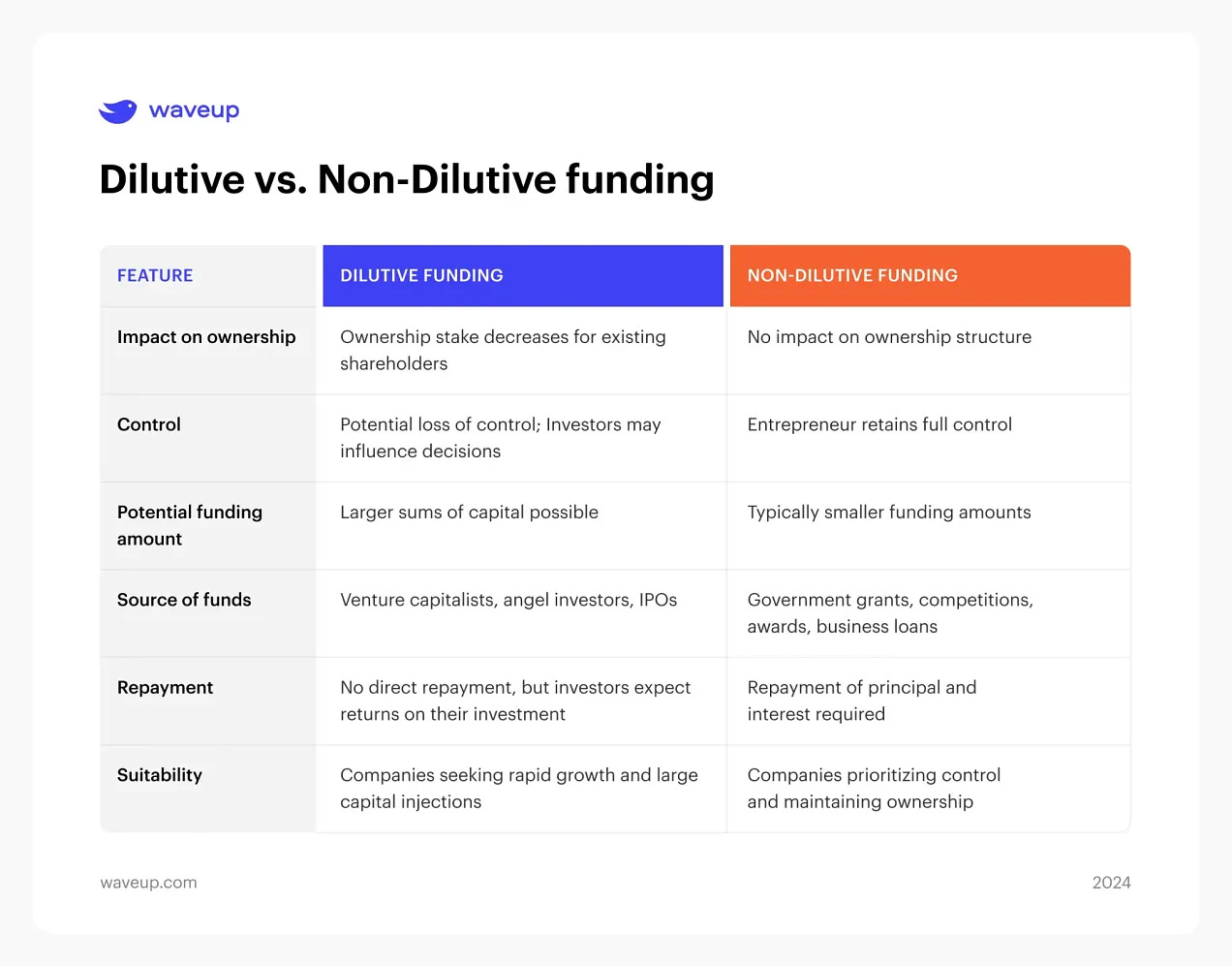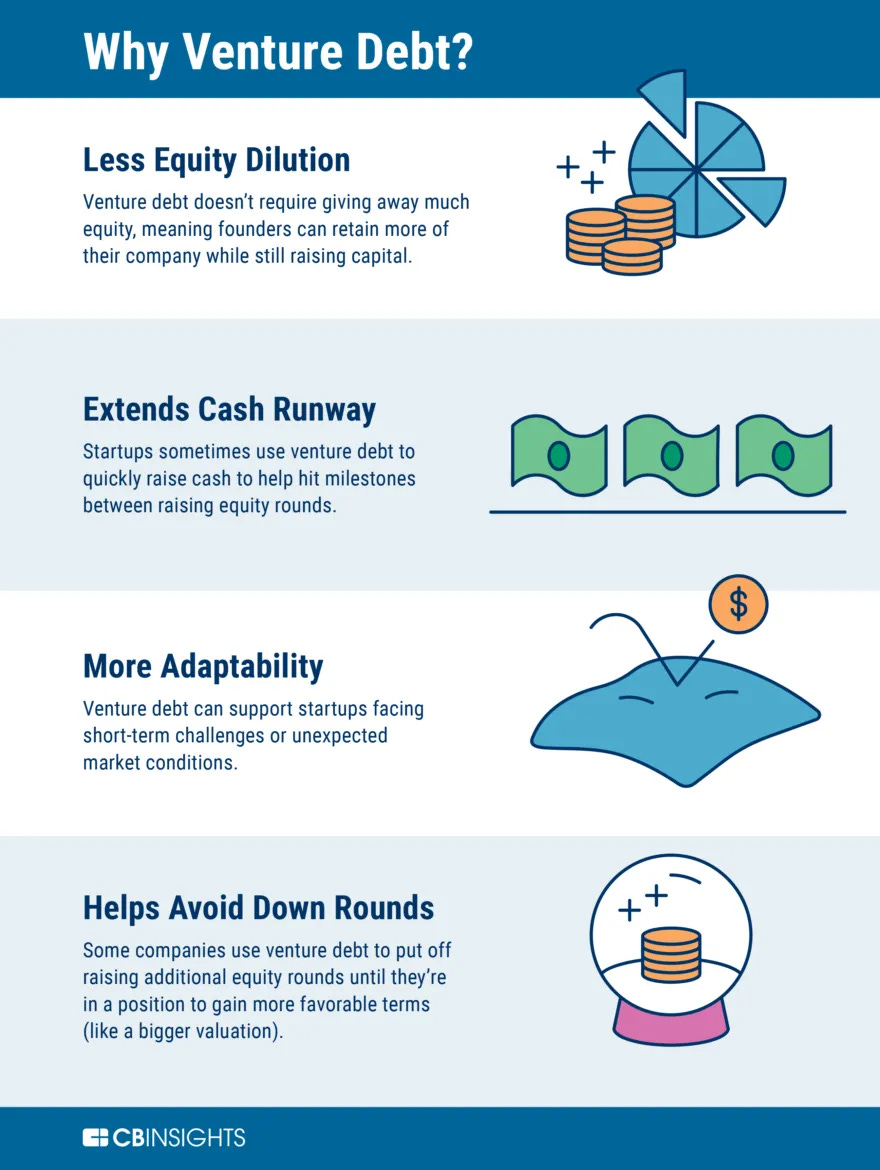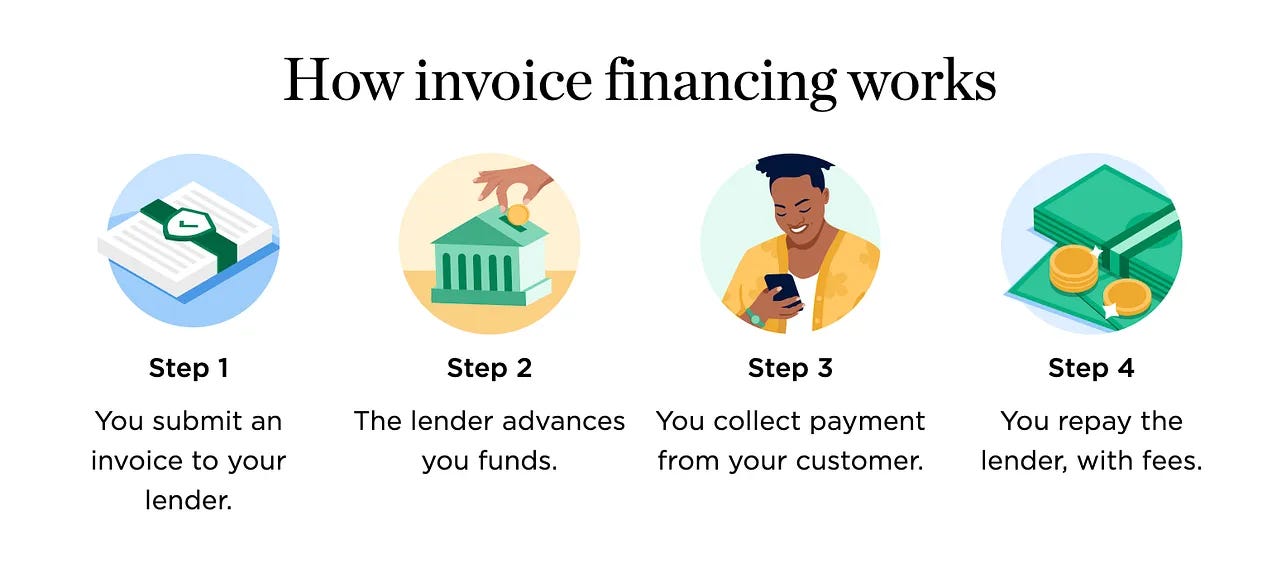Non-Dilutive Funding: How to Grow Without Losing Control
Discover how non-dilutive funding can scale your startup without bartering equity.
Raising capital doesn’t have to mean giving up control.
Every time you raise a round, you’re not just getting cash—you’re giving away a piece of your company. More investors means more oversight, more opinions, and less say over how you build. And for most founders, that trade-off isn’t as clean as it sounds.
But what if you didn’t have to trade equity for growth?
What if you could fund your startup without giving up ownership?
Brought to you by Attio - The CRM used by both startups and VCs (including me)
I use Attio to manage deal flow, track founder conversations, and sync everything across my team — no clunky setup required.
Startups use it as a sales CRM from day one
VCs use it for deal tracking, LPs, and intros
Fully customizable and updates automatically
It’s fast, flexible, and built for how we actually work.
Here’s the good news: non-dilutive funding exists—and it’s more accessible than ever. From government grants to revenue-based financing, venture debt, and invoice factoring, founders now have a menu of options that help scale without shrinking your stake.
In this guide, you’ll learn:
What non-dilutive funding is (and how it compares to VC)
How to prep your startup to qualify
Where to find the best-fit funding for your stage
Whether you're stretching your runway or avoiding your next equity round, this might be the smartest capital you raise.
Table of Contents
Preparing for Non-Dilutive Funding
Finding the Right Non-Dilutive Funding Option
How to Secure Non-Dilutive Funding
Lowering Risk with a Diverse Capital Stack
Is Non-Dilutive Funding Right for My Business?
Finding the Right Way to Go
1. Preparing for Non-Dilutive Funding
Before chasing cash, get clear on what you actually need.
One of the most common early-stage mistakes? Raising money without a plan. Too much funding too soon = bloat. Too little = runway panic. And both lead to giving away more than you should.
So before diving into non-dilutive funding options, start here.
🔢 Get Clear on Your Capital Needs with Projections
Ask yourself:
How much do I need?
Where is it going?
How long will it last?
Break it down by function: product, marketing, hiring, ops. Then model how each line impacts growth. Whether you're applying for revenue-based financing, grants, or loans—investors want a thoughtful plan, not a best guess.
Bonus: this helps avoid over-raising, which can add unnecessary repayment pressure or push you into hybrid models that dilute you down the road.
💸 Non-Dilutive ≠ Free Money
Sure, you’re not giving up equity. But there’s always a price.
Grants may be “free,” but they often come with compliance requirements, consortiums, and reporting burdens.
RBF works well if your startup has predictable recurring revenue—but if sales dip, fixed fee repayments can be painful.
Loans and venture debt mean interest. Always. If you borrow $500K at 10%, you're on the hook for $550K—and if your cash flow stalls, that debt can become a real drag.
Rule of thumb: Treat all capital like it costs something—even when it doesn’t dilute you.
Run realistic cash flow projections and use ROI estimates to justify every dollar raised. Funders love startups that think like CFOs.

Choose the Right Non-Dilutive Funding Type for Your Business Stage
The right funding depends on your business model and growth stage. Choose wisely, and you’ll avoid financial strain while keeping your options open.
Pre-revenue startups: Grants, pitch competitions, and tax credits are your best bet.
Early revenue startups: Revenue-based financing, invoice factoring, and government loans can help with cash flow.
Growth-stage startups: Venture debt, business lines of credit, and strategic partnerships offer more capital without giving up too much equity.
2. Finding the Right Non-Dilutive Funding Option
Choosing the right non-dilutive funding source depends on your startup’s stage, revenue model, and financial needs. To help you better decide on the right funding option, let’s discuss some of the most common non-dilutive funding types in more detail.
Small Business Loans
A small business loan works a lot like a personal loan, it comes from banks, credit unions, or online lenders. It’s a solid option if you need funds to expand, buy equipment, or cover day-to-day expenses. If you're a startup in the US, the SBA (Small Business Administration) has loan programs with better terms that might be worth looking into.
Revenue-Based Financing (RBF)
When it comes to revenue-based financing, you’ll likely only be able to source this funding through specialized RBF firms and fintech lenders. This route is best for startups earning a steady monthly revenue but don’t want to commit to funding with other types of fixed repayment. RBF comes with fixed percentage fees, which can be beneficial for both your business and the lender because it’s a guarantee of royalties that won’t exceed the revenue you’re bringing in.
Capchase and Clearco are two RBF lenders that allow businesses to repay capital as a percentage of revenue.
Grants and Tax Credits
Grants come from government agencies, nonprofits, and private foundations, and they’re usually awarded to startups in tech, healthcare, sustainability, and innovation. If you’re building something groundbreaking, this could be free capital with no strings attached. For example, the National Science Foundation offers R&D grants for early-stage tech startups pushing the boundaries of innovation.
As for tax credits, they don’t put cash in your pocket, but they do lower your tax bill, which means more money stays in your business. Look into local, state, and federal tax incentive programs, especially if you’re investing in R&D, job creation, or sustainability initiatives. This can be a powerful way to stretch your capital without taking on debt or giving up equity.
Crowdfunding
Platforms like Kickstarter and Indiegogo let startups raise money directly from customers while validating demand at the same time. It works best for product-based startups with a compelling story. One of the biggest success stories? Pebble Technology, they raised over $10 million on Kickstarter for their smartwatch before it even hit the market.
If you’re not looking to give up ownership or take on debt, these non-dilutive funding options could be worth exploring.
Venture Debt
Venture debt is specifically for startups already backed by venture capital. These specialty lenders are often venture debt firms and banks, most offering financing for equipment purchases to add to your assets. If you’re a startup who has already raised equity capital, but just need the extra funding to extend your runway, then venture debt is likely the best non-dilutive route.

Why Venture Debt? Benefits for Startups: Less Equity Dilution, Cash Runway Extension & Flexibility". Image courtesy of CB Insights.
Silicon Valley Bank used to be the main provider but since its closure, there are other specialized venture debt firms that you can consider looking into based on your industry or product. For example, Hercules Capital provides venture debt financing to growth-stage startups in the fields of technology and life sciences.
Invoice Financing
Know how payday loans work? Well, it’s a similar process in the world of raising capital. This is a process for businesses to get a cash advance by using their outstanding invoices to secure a line of credit. You’ll get paid upfront and then repay the lender plus fees once you receive payment from your customers. This is an ideal option for startups with outstanding invoices needing short-term cash flow relief.

3. How to Secure Non-Dilutive Funding
When you’re trying to secure non-dilutive funding, you have to prove that your business is fundable. In venture capital, investors take risks on future growth. In the case of non-dilutive funding, providers will ask for proof that you can already generate revenue, manage cash flow, or meet specific funding requirements. Let’s break down the process of securing capital without dilution in 4 key steps.
1. Organize Your Financials Before Applying
Funders and lenders don’t just hand out capital, they want evidence that your startup is financially stable enough to manage funding responsibly. Before applying, you’ll need to be organized and have all the right information prepared.
Prepare financial documents.
This often includes profit and loss statements, cash flow projections, and balance sheets.
Ensure you have six months of revenue data (if applicable).
Revenue-based financing and venture debt providers require proof of income stability.
Track burn rate and expenses.
If your startup has high cash burn and inconsistent revenue, funders may see this as a risk. Make yourself aware of these numbers before you seek funding.
If you’re a pre-revenue startup, focus on alternative indicators like market validation, partnerships, and signed customer commitments to strengthen your case.
2. Build a Data-Driven Application
Most funding applications fail because they lack clear financial justification. A strong application should prove your startup will manage the funding effectively and repay obligations if required.
For grants: Highlight your economic impact, innovation, and industry alignment.
For loans and venture debt: Provide cash flow projections, repayment schedules, and collateral details.
For revenue-based financing: Show revenue stability and growth projections to justify repayment terms.
The key is to avoid submitting vague funding requests. Instead, specify how each dollar will be used along with the expected return on investment (ROI).
3. Use Online Platforms to Speed Up the Process
Instead of manually searching for funding, use these digital platforms to match your startup with funding faster.
Grants: Grants.gov, Hello Alice, SBIR/STTR
Revenue-based financing: Clearco, Pipe, Capchase
Alternative lending: Lendio, Fundbox
Pro tip: Set up reminders for funding deadlines to ensure you don’t miss out on certain opportunities.
4. Strengthen Your Funding Network
Many funders prefer to work with startups they trust, making networking an important part of securing capital. Even if you currently don’t have the largest network, there are plenty of ways to strengthen and expand it.
Attend pitch competitions and startup accelerators.
Many funding programs prefer startups that are actively involved in the ecosystem.
Get warm introductions.
A recommendation from a past funding recipient can improve your approval chances.
Engage with grant and loan officers before applying.
Understanding their evaluation criteria can help you refine your submission.
4. Lowering Risk with a Diverse Capital Stack
When you’re chasing growth, it’s also vital to stay financially stable. When you rely only on equity financing, you not only reduce your own equity, but it also leaves your business exposed to the ups and downs of the market. By mixing in non-dilutive funding, you’re diversifying your funding sources and growing at a steady pace.

Stacking different types of non-dilutive funding is like building a safety net, you’re not putting all your eggs in one basket, which means less risk and more flexibility. If one funding source slows down, you’ve got others to keep things moving.
A well-balanced capital stack lets you fund growth, scale operations, or invest in R&D without giving up too much ownership. It also shows investors that you’re financially savvy and not just chasing cash wherever you can get it.
So how do you do it?
Start by mapping out your business goals and matching them with the right mix of funding. Look into grants, revenue-based financing, tax credits, or even strategic partnerships. If you still need equity funding, use it wisely, combine it with non-dilutive options to keep control and minimize financial risk.
5. Is Non-Dilutive Funding Right for My Business?
Not every startup is a good match for non-dilutive funding. While it has its advantages, it also comes with strings attached that might not suit your business. Before you spend time exploring this route, here’s a simple three-step checklist to help you decide if it’s the right fit.
✔️ Do I Have Predictable Revenue or Strong Financial Projections?
Non-dilutive funding doesn’t equal free money, at the end of the day, you need to prove you have stable revenue or at least solid financial projections. Lenders and investors want to see that you can meet repayment terms without breaking a sweat.
If your numbers tell a strong story, such as steady revenue, growing customer contracts, or a pile of pre-orders, you’re in a good spot. But if you’re still pre-revenue, your cash flow is all over the place, or your growth depends on “ifs” and “maybes,” this isn’t the right path.
Pro tip: Pre-revenue? Look into grants, tax credits, or accelerator programs. These can give you a financial boost without putting you in debt.
✔️Can My Startup Sustain Repayment Terms?
Non-dilutive funding requires repayments, revenue-sharing, or performance milestones. If your startup doesn’t have cash flow to support repayments, non-dilutive capital could create financial strain rather than relief.
If your startup has high customer retention, repeat purchases, and strong gross margins, making repayments manageable, then non-dilutive funding suits you. If your startup is burning cash quickly, struggling with inconsistent revenue, or facing unpredictable market demand, this option may only hurt you.
Pro tip: Before applying, run a cash flow forecast using a tool like LivePlan or Finmark to ensure repayments won’t disrupt operations.
✔️ Do I Want to Maintain Full Control and Avoid Investor Oversight?
One of the biggest advantages of non-dilutive funding is that you don’t give up equity or decision-making power. If you value ownership, independence, and long-term control over your company, go for non-dilutive funding options.
However, if, as an early-stage founder, you are also looking for mentorship, industry connections, or operational support from investors, then traditional VC funding is probably a better fit for you.
Pro tip: Some non-dilutive funders also offer opportunities for networking along with business support. Look for grant programs or lenders with founder resources.
6. Finding the Right Way to Go
Non-dilutive funding is like finding a shortcut for early-stage founders. It lets you grow without handing over the keys to your venture. These options keep you in the driver’s seat while building a financial safety net.
The trick? Pick the right mix, tidy up your financials, and apply with a clear strategy. If your business has steady revenue, solid cash flow, and you wish to stay in control, non-dilutive funding could be the right way to go.
💡 Frequently Asked Questions on Non-Dilutive Funding
What is non-dilutive funding?
Non-dilutive funding is capital that doesn’t cost you equity. You raise money without handing over ownership. Think grants, revenue-based financing, or government loans. It’s a way to keep control while still getting the resources to grow.
Is revenue-based financing better than a loan?
Depends on your cash flow. With revenue-based financing, repayments flex with your revenue. If you make less, you pay less. Companies like Capchase and Clearco offer this model. Great if you’re earning consistently — risky if your revenue’s unpredictable.
Are grants really “free money”?
Technically, yes — but with paperwork. Grants don’t take equity or require repayment, but you need to fit strict criteria and report on outcomes. It’s free capital for startups in innovation, health, energy, or impact. But it's competitive — and writing a killer proposal is half the battle.
What’s the biggest advantage over VC funding?
Control. Non-dilutive funding lets you grow without adding investors to your cap table. No board seats, no pressure to blitzscale, and no pushing for an exit before you're ready. It’s ideal for founders who want to build sustainably and stay in the driver’s seat.
Can pre-revenue startups raise non-dilutive funding?
Yes — but options are limited. You’ll want to look at grants and tax credits. If you’ve got a scientific breakthrough or social impact idea, that’s gold for government or nonprofit-backed grants. But you’ll need more than just a pitch deck — traction, tech validation, and strong storytelling are key.
How do I pick the right type of funding?
Match your stage and cash flow:
Idea stage: Apply for grants, pitch competitions, or tax incentives.
Early revenue: Explore RBF or invoice financing.
Growth stage: Look into venture debt or lines of credit.
What’s the downside to non-dilutive funding?
It’s not “free” in the purest sense. Loans come with interest, RBF takes a slice of your top line, and even grants require serious paperwork. Some funders also want proof of traction — no fantasy projections allowed. And if your revenue tanks, repayments can bite.
Where do I find these opportunities?
Start here:
Grants.gov (US public funding)
Swoop (UK + global funding finder)
SBIR/STTR (early-stage innovation grants)
Innovation Radar (EU grant recipients and visibility)
Does this mean I should skip VC entirely?
Not necessarily. Think of non-dilutive funding as the boost that gets you to the next milestone without dilution. It’s also a great way to show traction before raising equity — on your terms. Smart founders are now using a hybrid model: non-dilutive early on, VC when the scaling risk is lower.
What’s a capital stack — and why should I care?
A capital stack is just the mix of funding you use — grants, RBF, debt, equity. Diversifying it means you're less dependent on any one source, and you protect yourself from dilution or cash crunches. The best founders think about this from Day 1.






Two additional infos : Grants are not gifts as institutions giving you money impose a co-funding rate (e.g 60%), which means you have to fund the remaining 40% !
Also, you often receive the 60% part after proving that you spent the 40% (i.e. the grant is not fully upfront like a loan).